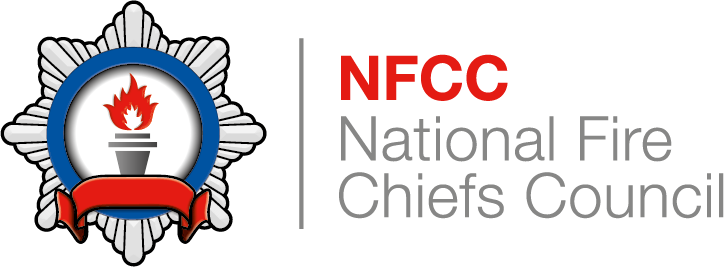Glossary
| Name | Acronym | Description |
|---|---|---|
| Security device | A wide range of fittings that may be fitted to residential and business premises, including security doors, bars, shutters, locks and bolts. This could include self-locking features. |
|
| Senior investigating officer | A police officer in charge of an ongoing major police investigation. |
|
| Sharps | Any object which could readily puncture or cut skin, including jagged edges, broken glass, hypodermic needles and scalpels. |
|
| Shipboard fire control plans | Fire control plans required for vessels under the Safety of Life at Sea (SOLAS) regulations. The plans include details of escape routes and location of equipment, including firefighting equipment. |
|
| Side impact protection system | SIPS | A safety system that protects the occupants of a vehicle against injury in the event of another vehicle crashing into the side of it. The side of the vehicle chassis is reinforced, with energy-absorbing honeycomb materials being used inside the doors. The idea is to distribute the energy of the impact more widely across the whole side of the vehicle, rather than having one area absorb it all. |
| Silo | A structure for storing bulk materials. Silos are used in agriculture to store grain, powders, fermented feed (known as silage) and animal slurry. They are used by other industries for bulk storage of coal, cement, sand, woodchips, metal waste, food products and sawdust. Silos range in height from around 10m to 90m with a capacity of 20 to 80 tons. |
|
| Sites of special scientific interest | SSSI | Sites with important wildlife and natural features, supporting many characteristic, rare and endangered species, habitats and natural features. |
| Situation report | SitRep | Report produced by an officer or body, outlining the current state and potential development of an incident and the response to it. |
| Slave control | Control panels of a secondary nature in building systems; they may not have the full functionality found in the master control panel |
|
| Sluice | A sliding gate or other device for controlling the flow of water, especially one in a lock gate. |
|
| Solid recovered fuels | SRF | A high-quality alternative to fossil fuel produced from mainly commercial waste including paper, card, wood, textiles and plastic. It goes through additional processing to improve the quality and value and has a higher calorific value than RDF. It is used in facilities such as cement kilns. |
| Space creation | Action taken to create space in a mode of transport or structure to gain access to a casualty, in order to carry out extrication or provide casualty care. |
|
| Spar coating | This common practice for both long straw and combed wheat reed roofs involves having just the decayed top surfaces of the thatch removed and then over-coated (spar coated) rather than stripped completely to the rafters. The spar coat is fixed to the layer beneath it with twisted hazel spars. |
|
| Spate conditions | Spate conditions occur when multiple emergency calls are received simultaneously for incidents at different locations. This can be for many reasons, most usually because of extreme weather conditions or a planned public event. Spate conditions can be prolonged and may last for hours or sometimes days. |
|
| Spike conditions | Spike conditions occur with little or no warning and happen when multiple emergency calls to the same incident are received over a short time, such as a fire with plumes of smoke that can be seen over a wide area. These calls usually stop when operational personnel arrive at the incident. |
|
| Spot cooling | Effect of using a water jet, for example on hot metal such as the undercarriage of an aircraft after a crash landing. |
|
| Standpipe | Used on a hydrant to bring the outlet above ground level. The term normally includes the bend at the top which, when used separately, is known as the standpipe head. Standpipes may have single or double outlets. Risers in buildings may be referred to as standpipes. |
|
| Station incident officer | SIO | Network Rail or relevant train operating company (TOC) ‘on-site’ commander at the scene of an incident on a station |
| Statutory resilience forums | Multi-agency partnerships including:
|
|
| Sternal notch | Also known as the suprasternal notch, this is a well-defined triangular dip at the front of the neck in humans, between the clavicles and above the sternum. |
|
| Stoichiometric mixture | A balanced mixture of fuel and oxidant, where no excess of either remains after combustion. Mixtures containing more fuel than the stoichiometric mixture are known as rich mixtures, and ones containing less fuel are lean mixtures. |
|
| Stored energy | This is accumulated energy that can release suddenly, potentially causing serious injury or death. Stored energy can have many forms, including gravitational potential energy, pressurised gases and liquids, stored mechanical energy, and stored electrical energy. It is particularly dangerous because the hazard still remains, even though the original source of the energy may have been removed. |
|
| Strainer | Either manufactured objects such as fences, drains or railings, or natural objects such as trees, roots or vegetation. They allow water to pass through, but can trap solid objects. |
|
| Strategic co-ordinating group | SCG | A group with the purpose of taking overall responsibility for the multi-agency management of an incident and establishing a strategic framework, within which lower levels of command and co-ordinating groups will work. |
| Strategic co-ordination centre | SCC | A place for the strategic co-ordinating group to meet, at a location away from the scene that provides a support infrastructure. This will usually be hosted by the lead organisation. |
